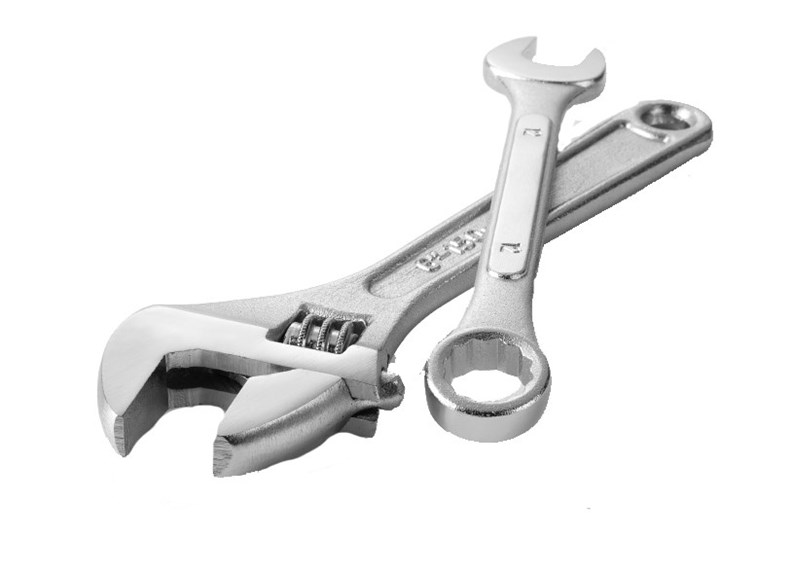For most visitors to New York City, it is a mystery as to why garbage disposers (the popular term disposal
derives from the GE brand name Disposall) have not been allowed in most neighborhoods. Despite the fact that these hardy kitchen appliances have been used elsewhere for 20 years, New York City officials have feared that they would have a detrimental effect on the city's sewage system.
On September 11, 1997, after a 21-month study by the Department of Environmental Protection (DEP), Mayor Rudolph Giuliani signed the New York City Council bill that lifted the ban on garbage disposers. The study concluded that rather than having an adverse effect on the environment, lifting the ban would reduce the amount of solid waste that is deposited into the city's landfills.
Proponents Cite Benefits
It is important to understand exactly how a garbage disposer works. There is a myth that they chop food particles with a knife. There is a common misperception that disposer units use blades to chop up the waste, says Frank Bryant, vice president of marketing for In-Sink-Erator Company, of Racine, Wisconsin, the country's largest producer of kitchen sink disposers. But, the fact is, there are no blades on any of the units on the market. Instead, the food waste that enters the unit is spun around at high speed and slammed against a grind chamber, a potato grater-like cylinder. It is then pulverized into a siltlike consistency.
Bryant also clears up the issue about water usage in the disposer. An average consumer would use a disposer from 30 seconds to several minutes a day. For most efficient use, Bryant explains, you should run the water 15 seconds before introducing wastewhile the unit is runningand 15 seconds or so afterward to clear the unit.
From a waste management point of view, the garbage disposer improves the quality of life for both residents and management, explains Eve Martinez, recycling coordinator of Westchester-based Hi-Rise recycling. Martinez, who testified at hearings for the approval of disposers, says, I'm in buildings every day overlooking the garbage/chute systems in the buildings. Although we don't sell them, disposers can get rid of 50 percent of the rotting waste and infinitely improve the quality of life. It makes things more pleasant. For management, the maintenance workers have to spend less time cleaning up the mess that the rotting waste makes. Garbage chutes are revolting and if you can eliminate the waste through other measures it is an improvement on the quality of life.
In addition to citing a minimal impact on the city's sewage system, the DEP's study also mentions that other cities such as Boston and Philadelphia haven't had any problems in their older buildings. Virtually everywhere else in the country people use garbage disposers, says Ilyse Fink, spokesperson for the Department of Buildings. Now New York will join the club. According to the Association of Home Appliance Manufacturers in Washington, D.C., more than 42 million American homes have disposers. Fink also added that the DEP and the Department of Buildings will continue to monitor the installation and usage of the disposers to make sure they will not harm the environment or the city's sewage system.
One of the most verbalized arguments against disposer usage is that the large number of multi-family dwellings in New York w ffb ould increase the amount of waste going through the sewage system, making it work harder than it is normally used to. But the DEP has concluded that even in a worse case scenario only 38 percent of households will be using disposers by the year 2035. And, while water consumption will increase as a result of garbage disposer usage, it will only be by one gallon per household per day. The DEP also noted that the impact of additional solid waste being diverted into the city's sanitary system would have a minimal impact on water quality.
Critics Remain Vocal
However, there are others who disagree with the DEP's study. According to an independent study by WETA, an environmental impact group based in Arlington, Virginia, wastewater that contains a high amount of organic matter is harder to break down in a septic tank or at the sewage treatment plant. The reason involves the biochemical oxygen demand (BOD), the tool by which the level of organic matter in water is measured. A higher BOD level occurs when organisms that decompose the matter in water use up more oxygen, causing the oxygen-depleted water to make it more difficult for fish and other aquatic organisms to live in the bodies of water where the treated water eventually winds up.
It adds more solids to the system, which makes treatment facilities work harder, explains Peter Sattler, an environmental planner for the Interstate Sanitation Commission, a national sanitation organization. The Commission urged the city not to lift the ban. We're talking 13,000 tons a day of household garbage. Unless there is beneficial re-use (recycling), humans will always contribute to the waste stream. Disposers just keep adding to it.
Democratic Councilman Sheldon Leffler of Queens was one of the more vocal opponents of lifting the ban. Our waters are cleaner than they have been in decades. People are swimming and fishing again in the Hudson. Should we allow these hard-won gains to be lost so that a minority of New Yorkers can grind their food garbage? I think not.
Getting Board and City Approval
Even though most hardware stores like Pergament and Home Depot sell disposers, there are steps that have to be taken prior to performing the installation. The first is gaining the approval from the co-op or condo board. Since this is new territory, some boards may be reluctant to grant permission for the installation.
One of the main concerns is what the disposers will do to the pipes of older buildings. Bob Bellini, Jr. , vice president of Varsity Plumbing in Flushing, New York, says the impact is minimal. If the board is worried about the damage that could be caused to a pipe that was installed in 1925, a conscientious contractor would snake out the drain lines under the sink before installing a disposer unit to clear any accumulated sludge. Bellini adds that most contractors will also recommend a unit that is suitable for the building.
We haven't had a request for one to be installed yet, says Nicolette Meyers, president of a 145-unit co-op located in the Bronx. It's hard to tell what the board would determine. I've lived in the city all my life and never had the opportunity to use one, so personally I don't know if I would want one. But I think we would take a serious look at the ramifications for our building before deciding either way.
Those who have relocated to New York City from other areas that have allowed garbage disposers practically since their invention, were excited when they got the news. I lived in Pennsylvania for 15 years, explains Marty Webber, who resides in an Upper East Side condo. My wife and I were ecstatic when we saw the news. I know it sounds weird, but it comes in handy and makes the trash less slimy and smelly. Our building is a bit more modern and the board approved the installation without a problem. Webber also says that the installation was quick and easy. We got a unit that cost a little more, he adds because it had extra insulation to help reduce noise. It's hardly noticeable.
If the board says no then that's c86 pretty much it, no matter how unfounded their fears may be. If the board grants approval for the disposer, the unit owner must obtain a plumbing and electrical permit from the Department of Buildings. The plumbing permit costs $45 and the electrical permit is $10. The price of a disposer ranges from $300 to $700 when installed by a licensed plumber which is required by the Department of Buildings. Higher end models are already emerging and can cost up to $945.
Different plumbers handle the installation differently, but most will offer an installation package. We usually sell an installation as a package and bring along our own electrician, Bellini states. An installation can cost from $500 to as much as $1,500 depending on the type of unit purchased and the ease or difficulty of the installation. This includes the unit, parts, labor and permit fees.
Whichever side you take, the age of disposers has come to the city. As one of the proponents for lifting the ban said, Why can't we make things a little more convenient for people?
Ms. Cooper is Editorial/Internet Coordinator of The Cooperator.







Leave a Comment